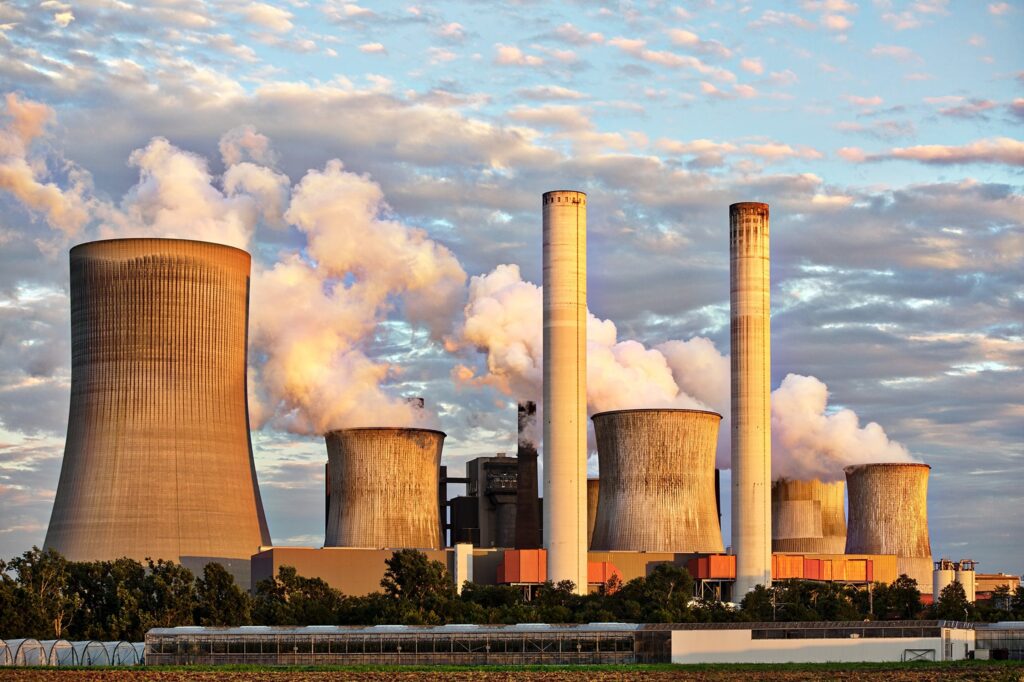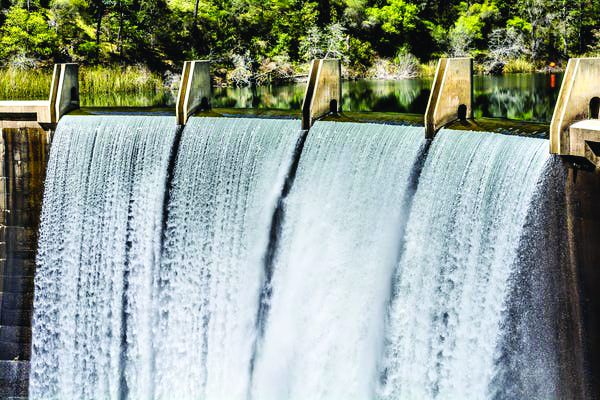As the scarcity of coal is getting worse will India explore and build the path of sustainable energy that can change the lives of our future generations? Will we be able to find solutions to the challenges caused by the coal shortage?
By Abhijit Chanda
- India generates around 210 Gigawatts (GW) of electricity from coal, which is about 53% of the country’s total energy needs
- A bulk of the thermoelectric production across the world is done primarily by coal
- Our dependency on coal and other fossil fuels will take a couple of decades to wean ourselves off it
- Industries like aluminium and steel, paper and plastics, chemicals, etc depend on coal or coal power plants to operate
INDIA’S coal shortage is getting worse. The increasing load shedding powercuts are torturing Indian families across the country. What’s causing this travesty, and why aren’t we moving away from coal if it’s in such short supply? What are the alternatives? Whatever happened to renewable energy in India? Will we be able to run our ACs on it?
These are only some of the questions that have been running through my mind, and I’m sure through yours, at least to some extent. The truth is, these aren’t just musings but critical questions that our government needs to be asking and answering. Fortunately, ours is working on finding solutions to these issues that plague us. But, as always, it’s complicated. So let’s break it down and use the pieces to lay out a path into India’s energy future.
INDIA’S ENERGY AS IT STANDS
First, what is energy? Its simplest definition is the ability to do work. In this article, we will be talking about electrical power as the primary form that helps us run everything from our smartphones and refrigerators to the railways, industries, and other critical infrastructure components.
According to data from the Central Electricity Authority (CEA), in April 2022, India’s electricity production through thermal plants using domestic coal stood at 182.39 GW. Besides that, we, along with China, import large amounts of coal primarily from Indonesia

In India, most of our electricity comes from thermal power, otherwise called thermoelectric power, most of which is generated by coal in India. We also use gas, but it tends to be more expensive, so India has fewer plants while richer countries have far more. However, a bulk of the thermoelectric production across the world is done primarily by coal, of which China, followed by India and are the largest producers, consumers and importers in the world.
In other words, India has the second-highest energy demand globally, which is catered to massive indigenous production by the world’s largest publicly funded coal mining organisation, Coal India Limited (CIL). In fact, we generate around 210 Gigawatts (GW) of electricity from coal, which is about 53% of India’s total energy needs. According to data from the Central Electricity Authority (CEA), in April 2022, India’s electricity production through thermal plants using domestic coal stood at 182.39 GW. Besides that, we, along with China, import large amounts of coal primarily from Indonesia. Power plants that are using imported coal are generating 16.73 GW.
WHY IS COAL RUNNING OUT?
Nine thermal plants with the capacity to generate 3.56 GW have shut down since their coal ran out. At the moment, 182.39 GW of power is being generated through power plants using domestic coal and they have about 34% of the minimum limit of coal they should have in stock. The story is the same with the plants using imported coal.
The Russia Ukraine conflict also has a part to play indirectly. As Russia and most of Europe have severed trading in coal, gas and other fossil fuels, the latter is looking to South Africa, Australia, Indonesia and the US to supply their fuels and can pay the higher rates that India can’t afford. That’s why India usually trades with Indonesia. But with the Russian conflict, continuously rising demand and low domestic stocks, Indonesia started facing shortages in their own production last year and have temporarily shut down coal exports. The result is an almost complete shutdown of fresh coal in the Indian market for the last 3 months.
Now, in the summer months, the demand for power is at its peak with air conditioners running constantly in every office and home that can afford them. As you can see, it’s not just our comfort or convenience that is at stake here. And it’s not only the homes and offices that get affected. Industries like aluminium and steel, paper and plastics, chemicals and fertilisers, and cement depend on coal or coal power plants to operate. Whole supply chains come to a grinding halt in the absence of coal.
IS COAL BEING MADE OBSOLETE?
This precious black fossil fuel is also one of the heaviest pollutants that are responsible for climate change. Coal is responsible for over 0.3C of the 1C increase in global average temperatures. This makes it the single largest source of global temperature rise followed by oil. Many countries, including India and China, are planning to shut down coal usage and become carbon neutral by 2040 or 2050. Coal usage in these countries hasn’t reached its planned peaks.
India still has many coal power plant projects to be designed and constructed. Investments in coal are also starting to drop off since its production has a definite limit. This is leading to coal descending into a limbo of sorts where its demand continues to increase while its supply is already beginning to drop. Most countries, especially growing and developing ones, do not have the means to convert into a coal-free economy anytime soon.
Right now, alternatives like briquettes, gas and biomass are being used to replace the demand for coal, but their infrastructure is nowhere close to being able to bridge the gap that coal is leaving. Adding to this problem, producers and distributors of coal are going bankrupt as people don’t want to pay the exorbitant prices that the supply-demand has led to.
Similarly, governments have also been known to rise and fall depending on how much their constituents have to pay for energy and fuel. In other words, if you let the price of coal or petrol escalate under your watch, your chances of getting re-elected are slim for sure. This is a good motivator for governments to find solutions to this problem. Aside from finding solutions within the coal industry, the Narendra Modi government has also committed to help India’s renewable energy industry grow as quickly as possible.
The centre is already asking state governments of coal-starved power plants to import coal. They are also allowing states to use up to 25% of its captive coal reserves. Power generating companies have also been allowed to blend up to 10% of imported coal to ease the burden on CIL while considering raising the imported coal stock, but rising coal costs worldwide is a significant hurdle to overcome.
CIL has made a statement that it has increased supplies to thermal power stations by 14.2% during the first half of April 2022, as compared to the same period in the previous year. Coal generation has hit 1.64 million tonnes (MTs) per day compared to 1.43 million tons in 2021.
CIL has also said that it has boosted its production to 26.4 million tons during the first half of April, achieving 27% year-on-year growth. They added that 8.75 million tons of coal will be made available to government companies by rail until
May 31, 2022.
SO WHAT SHOULD THE FUTURE HOLD?
Nuclear power is the safest form of constant energy production known to man. If you consider the number of deaths caused by any form of energy production, nuclear power plants will be near the bottom. Nuclear plants also tend to be very efficient and can use nuclear fuel for far longer and automatically produce more energy from any given amount. Plus, it’s entirely emission-free and is an essential component in renewable energy. After all, the sun doesn’t always shine and the wind doesn’t always blow. There needs to be a component that is independent but also efficient, safe and powerful.
Air pollution from coal has killed approximately 25 deaths in a year while generating an energy unit of 1 Terawatt hour of electricity. That makes about 1,230 people in 50 years for generating that 1TWh of energy. In the same period, solar, wind and hydropower combined have caused the death of 4 people, primarily due to accidents during maintenance or repair.
Nuclear energy would cause 1 death every 14 years. One study by Kharecha, PA and Hanson, JE in 2013 says atomic energy has saved 2 million lives between 1971 and 2009 by replacing fossil fuels. In an attempt to appease those against nuclear power, Germany has closed 11 nuclear power plants and increased their imports and production of coal, thereby increasing air pollution and putting its citizens in harm’s way. We need to learn from that example. When it comes to nuclear waste, in my opinion, I feel storing it in secure silos poses less risk in the long term than the consequences of fossil fuels.
For sure, coal is going out of fashion, and rightly so. It’s a considerable hazard to human health and that of the planet. However, our technology and infrastructure are so deeply dependent on coal and other fossil fuels that it will take a couple of decades to wean ourselves off it.
Renewable energies are still becoming more affordable, and they hold their unique challenges. But they are the future of energy! And we should be glad our government is doing everything it can to promote its development and usage. However, moving to renewable energies is going to take a long time. In the meantime, state-of-the-art nuclear power generation needs to be embraced and invested in because it will have to be the foundation of an emission-free energy future for India.
RENEWABLE ALTERNATIVES – SOLUTIONS FOR ALL
India has hit 100 GW of solar energy production and ambitions to install 450 GW of renewable energy capacity by 2030

SOLAR POWER
Let’s start with one of the most plentiful resources in the subcontinent – the Sun. India has hit 100 GW of solar energy production and ambitions to install 450 GW of renewable energy capacity by 2030. The government has put several programs, policies, and incentives to help the solar energy industry grow as quickly as possible. Even the private ventures in this space are increasing – like Tata Power Solar, Vikram Solar, and Moser Baer Solar – catering to homeowners, industries, and companies.
You can now install solar panels on your roof and use their power to be stored and used as power backup or sell it to the grid for a rebate on your bill. However, how much you can install depends on your budget and the area on the terrace, which is totally up to you, but if you want to do some good for your country and your planet, installing solar panels on your home is a vital step worth considering.
Solar energy is one area I feel has the most potential to replace coal since it’s a scalable technology that’s getting cheaper by the day and is far more helpful in a country like ours, with plenty of sun to spare.
HYDROELECTRIC

While solar can be installed on rooftops and wasteland, hydroelectric projects are much more invasive to their local ecology and have long since been opposed by environmentalists. On the other hand, hydroelectric has tremendous potential and may be emission-free, and is a technology we have been using for a long time. It helps control floods and even helps irrigate farmland. But it does kill vast swathes of forested land. Those submerged trees will release greenhouse gases like methane for years.
Hydroelectric also has potential dangers related to dam failures. In 1975, the Banqiao Hydroelectric Dam failed in China. Due to the bad quality of the building, improper maintenance and the massive typhoon that hit the dam, it collapsed and killed an estimated 1,70,000 people downstream. This is rare, of course, but it is worth noting.
WIND

Wind farms are also taking wing in India, with many windmills installed in the various distant locations In India. I have seen many of them in the remote dunes of Jaisalmer. Currently, we have about 40 GW of wind energy installed, with most of the farms clustered in Madhya Pradesh, Kerala and Telangana. This may seem like a small number, but it’s the fourth-largest globally. This technology is relatively cheap and non-invasive to install. Except for the birds, as its opponents claim.
However, if you look at the average causes of death of birds, cats outdo windmills by orders of a magnitude worldwide. For example, some estimates put birds killed by windmills in the UK as between 10,000 to 100,000. However, birds killed by cats are estimated to be around 55 million annually. Plus, like blades that are more visible to birds, developments are being developed to make windmills even safer.
Wind turbines also tend to be very noisy, making installing them away from populated areas necessary.
Adding to safety and practicality and the potential elimination of noise pollution becoming disruptive, offshore wind farms are already in use worldwide. However, their installation and maintenance are far more expensive than land-based windmills, so it’s not an option India will probably take.
According to an article called Where Does Wind Power Make Sense? on DW.com: “…the complexities and cost of laying down power cables on the seabed and maintaining offshore wind farms mean the electricity they generate is twice as expensive as that from turbines on land. Nonetheless, offshore wind farms in densely populated regions could play a useful role in a climate-neutral energy supply.”
TIDES AND WAVES

India has a coastline of over 17,500 km, including the Andaman and Lakshadweep islands, making tidal and wave energy have a great deal of potential. Energy generation from the ocean uses the force of tides and waves to move turbines and generate electricity. According to the Indian government, our country has the potential to generate 54 gigawatts (GW) of ocean energy – tidal power (12.45 GW) and wave power (41.3 GW).
However, the costs of installing them are very high, and the potential damage it can do to ocean life is still significant as current standards go. These serious problems are still being solved, so let’s not hold our breaths.
NUCLEAR POWER

The very word strikes fear into people’s hearts and brings back horrific images from the Chernobyl series, or more recently, from the Japanese tsunami that destroyed the Fukushima Daiichi reactor sending radiation across the pacific, touching California before dissipating. The fact is that the WHO has estimated the total death toll caused by the Chernobyl disaster is around 4,000 deaths, which some organisations feel is too high.
Fukushima, in comparison, has had 573 confirmed deaths, most of which weren’t due to the radiation but rather the stresses of the evacuation on mostly older populations. Long-term estimates say, at most, 1,000 may die prematurely due to the Fukushima Daiichi disaster in 2011. Plus, nuclear plants are also costly to build, especially with the necessary efficiencies, redundancies and safety features. But the fact is, nuclear power is far safer than people think, especially the latest Generation III and III+ models.
According to the World Nuclear Association, so-called third-generation reactors have:
- A more standardised design for each type expedites licensing, reduces capital cost, and reduces construction time.
- A more simple and more rugged design, making them easier to operate and less vulnerable to operational upsets.
- Higher availability and longer operating life – typically 60 years.
- Further reduced the possibility of core melt accidents.
- A substantial grace period, so that following shutdown, the Stronger reinforcement against aircraft impact than earlier designs to resist radiological release.
- Higher burn-up to use fuel more thoroughly and efficiently and reduce the amount of waste.
- Greater use of burnable absorbers (‘poisons’) to extend fuel life.
